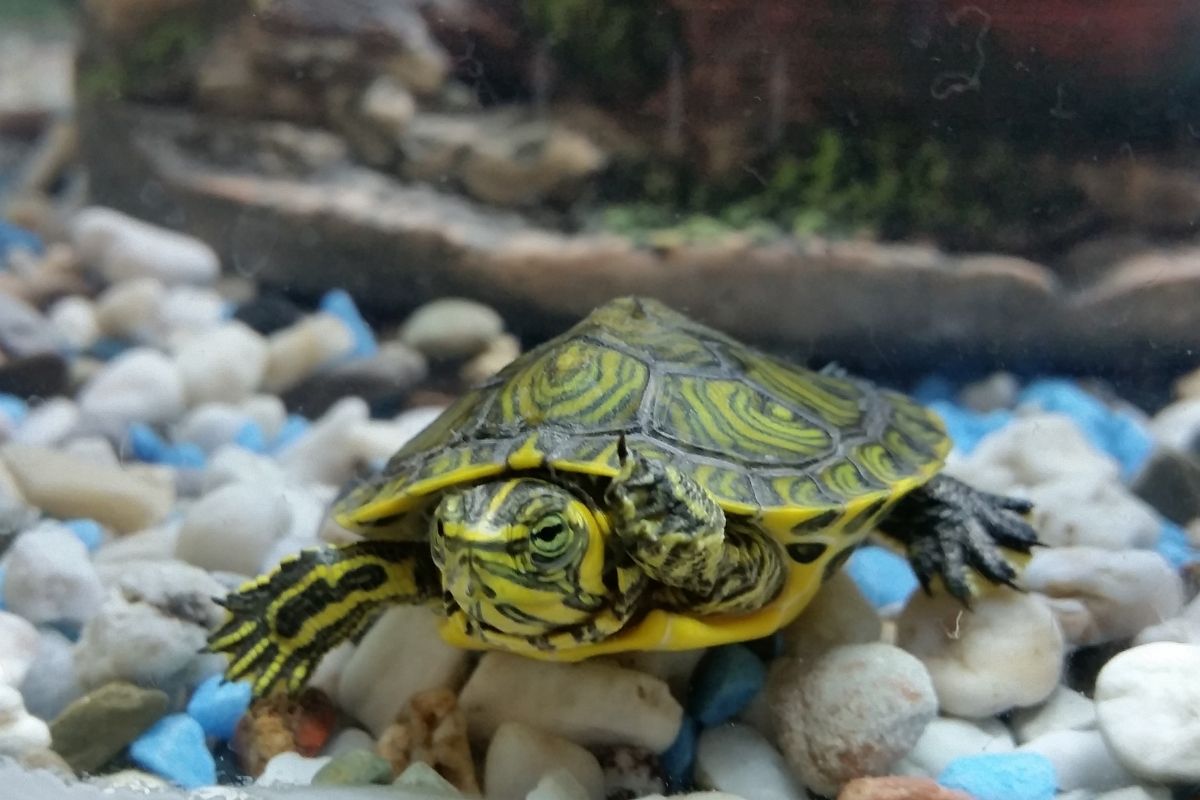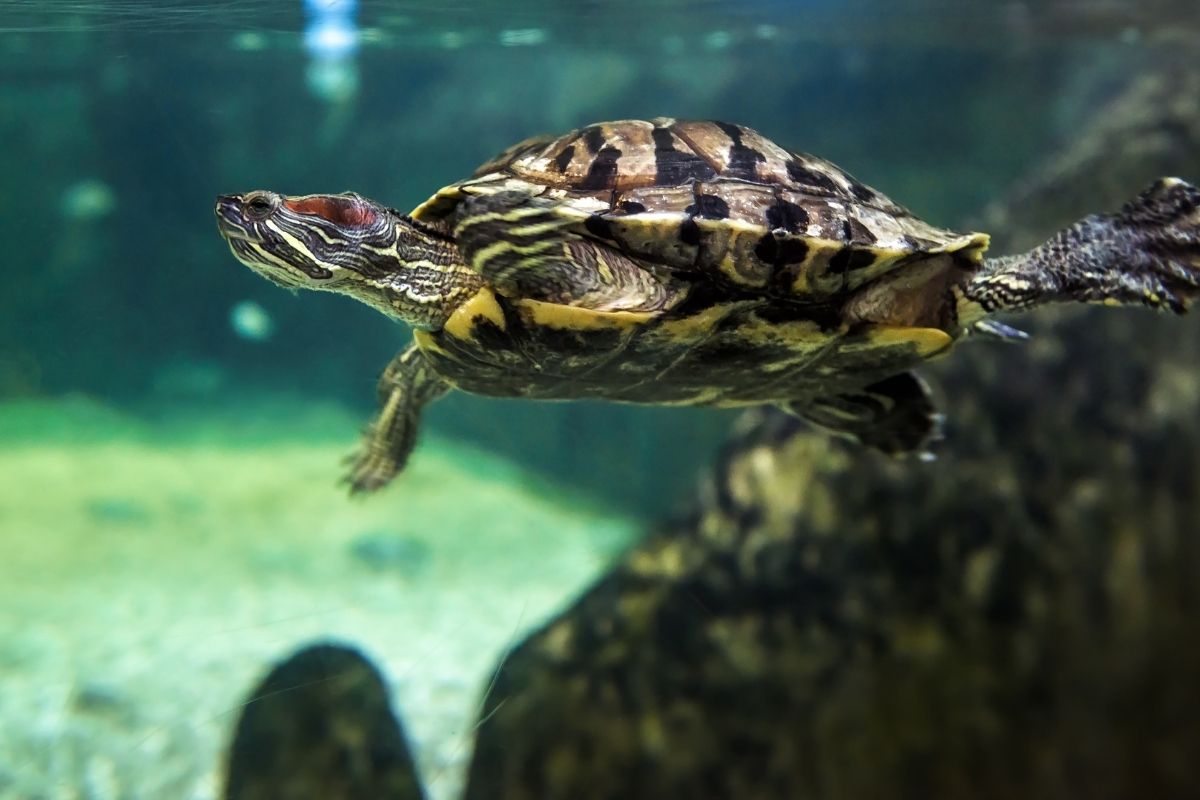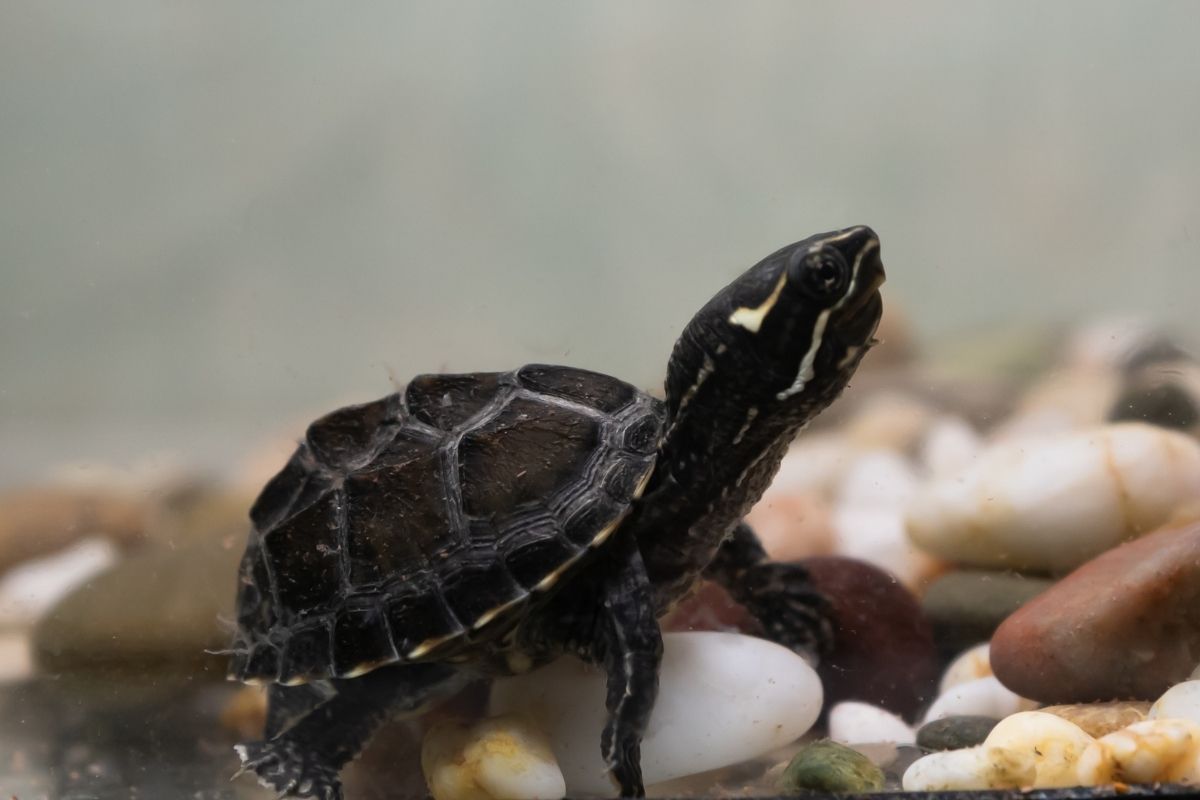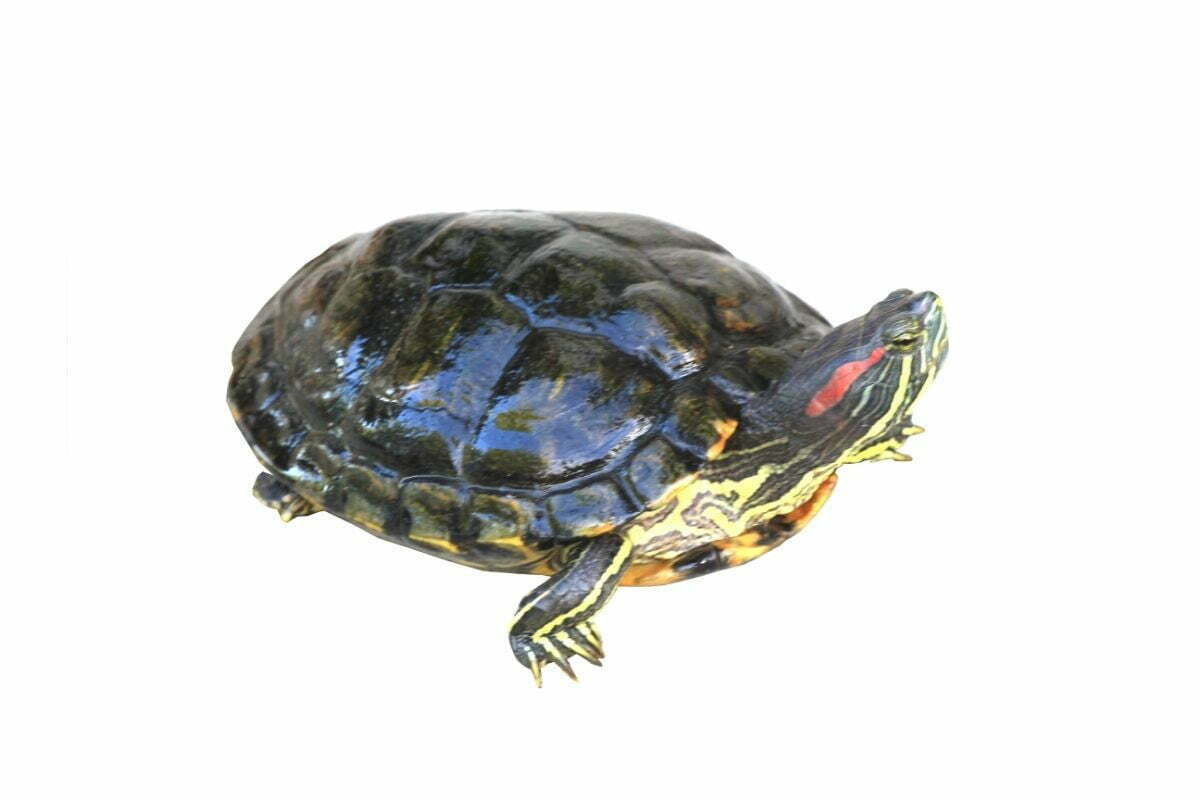Turtles are an insanely diverse and widespread order of the reptile kingdom, and part of the reason for their ubiquity is their ability to adapt to a number of environments.
Some can even tough it out a while in subzero temperatures — what the shell?! Am I right?

However, as cold-blooded creatures, other than heading for a sunny spot when they’re feeling the chill, and heading for a shady spot, or taking a dip when they’re warm, they have no means of regulating their own body temperature.
As captive turtles can’t roam freely in search of sun, shade, or water, the onus falls on us, the turtle guardians, to keep their temperature just right.
In light of this, we may need to kit out our turtles’ faux habitat with a water heater… but not always.
Some of the particularly resilient turtles out there will get by just fine without a heater (unless the water gets ridiculously cold). At the same time, the vast majority of these reptiles will need a heat supplement in their water.
Want more details? Read on, and all will be revealed!
How Come Turtles Are So Sensitive To Temperature?
It’s not that turtles are particularly sensitive to temperature; it’s that they’re ectotherms, meaning, as mentioned a moment ago, they rely on external sources for thermoregulation, i.e., the sun to warm up and shade/water to cool down.
In terms of temperature, cold-blooded animals are very impressionable. As soon as it gets hot, they get hot, and soon as their surroundings become cold, they get cold.
This is, of course, the same for us warm-blooded animals too. Still, the difference is that, to a certain degree, our bodies have the ability to sustain internal temperatures, even as thermal variables in our surroundings fluctuate.
The inability to maintain internal temperatures is why turtles spend so much of their time basking in the sun. They’re not doing it to get a healthy base going as we do; it’s an essential part of their day-to-day life, health, and survival.
Catching a few rays helps to improve turtle metabolism, increase temperature, and dry out stagnant waters where bacteria thrive.
Is The Cold Really That Bad For A Turtle?
In the wild, when the cold months come around, and the sunshine isn’t as dominant, turtles go into a torpor-like state known as brumation. Brumation is very similar to mammalian hibernation, but it’s not quite as static.
Although a turtle’s metabolism will slow right down and they will conserve their energy during brumation, they will occasionally stir to seek out temperate zones and have a quick bite to eat or a slurp of some water.
This will help a turtle survive the cold until temperatures start to rise again, so shouldn’t this mean that turtles in captivity can follow suit and survive without a heater? No, I’m afraid not.
In captivity, turtles may lose their brumation instincts and will not enter this dormant state. This is because we, the turtle parents, will be regulating everything for them to make their lives easier.
What’s more, with turtle enclosures being extremely limited in comparison to the natural world, there’s really no way for a captive turtle to seek more temperate or safe zones to brumate.
This is why a water heater is almost always necessary. When we invite turtles into our family, we submit to providing for their needs, and warmth is just one of them.
Without us regulating their warmth, they may well get very sick and, in dire cases, could even die.
How Do I Know If My Turtle Needs A Water Heater?

There are three things to consider when trying to figure out if your turtle needs a water heater:
- The turtle species
- Their natural habitat
- Conditions of their captive environment
Fighting fit turtles that hail from mild, temperate climates need temperatures between 73–75° F, while our beshelled friends from the tropics require something more to the tune of 75–80° F.
Freshly hatched and ill turtles, regardless of natural habitat, will benefit from temperatures above 75° F.
Now ask yourself if the temperature in your turtle enclosure caters to these thermal sweet spots.
If you maintain these temperatures consistently, then there may be no need to incorporate a water heater in your setup, as the water will automatically reach appropriate temperatures.
If ambient temperatures in your turtle enclosure tend to drop at certain times of the day or the year, then a water heater is essential! Going without one can set a chain of events in motion that you’ll want to avoid.
The cold can trigger illness or brumation, and as your turtle enclosure won’t support brumation, your turtle may well still get ill.
The key to keeping your little buddy happy and healthy is to monitor your tank and water temperature tirelessly. Keep on top of temp maintenance, and you shouldn’t run into any problems.
Should I Get A Water Heater For My Painted Snapper?
The sweet spot for painted snapper turtles is 75–80° F, alongside a basking area with temperatures between 85–95° F.
They don’t particularly mind a light chill all that much, but they are much happier, healthier, and more active in the warmth.
The painted snapper can become quite depressed and ill in sub 73° F environments, so if you’re having trouble keeping the temperature in their tank from dropping below this threshold, it’s essential that you bring a water heater into the equation.
Should I Get A Water Heater For My Musk Turtle?

Unlike painted snappers, who can handle the cold, musk turtles can’t stand it. To thrive, they need air temperatures upward of 75° F, and they like their basking area hot, too — we’re talking 82–90° F!
The musk turtle is an aquatic species, so if you’re having trouble maintaining air temperatures, it’s imperative that you use a water heater to keep them happy and healthy.
If you leave them to fend for themselves in cool waters, they will stop eating, exhibit lethargy, and may well get very sick.
Should I Get A Water Heater For My Snapping Turtle?
Snapping turtles are famously tough beasts, but if they could have things their way, air temps would never drop below 75° F and never rise above 85° F. They like their water temperature to fall somewhere between 78 and 80° F.
Snapper hatchlings, on the other hand, will need air temperatures of 78° F for the best start in life.
Should I Get A Water Heater For My Baby Turtles?
Juvenile turtles are incredibly vulnerable until they reach at least 6 months old, so it couldn’t be more important to provide a suitable heat source while they’re growing.
They simply do not have the constitution to survive the cold and haven’t yet developed the adaptable traits of their elders. In frigid environments, they will fall ill and possibly even die.
For most species, hatchlings’ habitat temperatures should be kept above 78° F. To ensure good health and optimal development, you’ll need to monitor both air and water temperature meticulously.
Should I Get A Water Heater For My Aquatic Turtle?
As their name suggests, aquatic turtles spend the bulk of their time swimming up a storm in the water you provide them, which means monitoring and maintaining consistent water temperatures is of the utmost importance.
Most aquatic turtles require a water temperature of around 78° F, and a water heater will help you to lock this figure in.
But be careful not to let the water get too warm, as this can stimulate bacteria growth in their habitat, which may lead to illness further down the road.
Conversely, if you are unable to keep water temperatures from dropping below 78° F, your turtle will be lethargic and susceptible to illness.
Should I Get A Water Heater For My Red-Eared Slider Turtle?

When it comes to red-eared slider turtles, it’s best to have a heater at hand for emergencies even though they generally won’t need one day to day. They tend to get along just fine if they have a piping-hot basking area.
You’ll only need to heat your water if your red-eared snapper turtle gets sick, their enclosure air temperature falls below 70° F, or their enclosure water temperature falls below 60° F.
Frequently Asked Questions
How Do You Keep A Turtle’s Water Warm?
The best way to regulate your turtle’s water temperature is to invest in a high-quality submerged water heater, such as this Zoo Med unit.
How Should You Monitor Water Temperature In A Turtle Tank?
You’ll need two thermometers if you want to keep your turtle’s living space habitable: a standard thermometer for air temperature and a water thermometer for water temperature.
For water monitoring, I’d recommend a floating thermometer like this one from the folks over at XY-WQ, or a submersible unit like this popular one from Zacro.
How Often Should I Monitor Water Temperature In My Turtle Tank?
You should check both water and air temperatures every day just to make sure everything is as it should be.
As long as the temperature in your home is relatively stable, it’s not a big deal if you forget to check once in a while, but if the seasons are changing or your thermostat is on the fritz, you’ll need to follow a strict monitoring schedule.
Final Thoughts
Now you know the deal with pet turtles and water heaters — whether they need one depends on their species, their natural habitat, and the temperature in their enclosure.
You should also consider a few other factors, such as turtle age and illness, and remember not to ignore other aspects of habitat temperature.
For a happy, healthy turtle, you should be striving for equilibrium between their water, air, and basking area temperatures.
